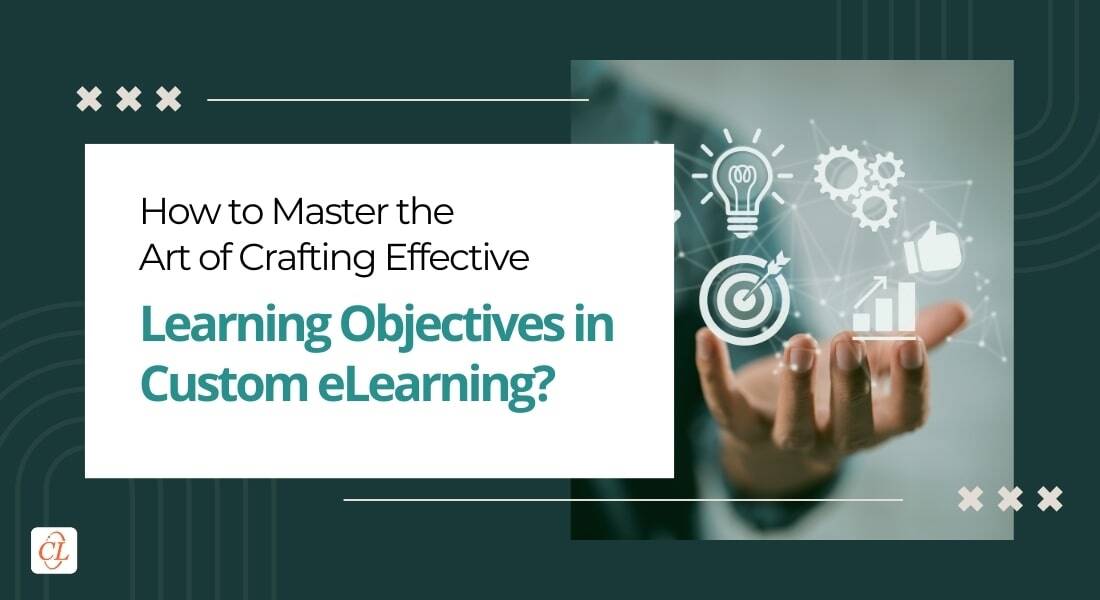7 Quick Tips to Frame Effective Learning Objectives for Custom eLearning [Infographic]
![7 Quick Tips to Frame Effective Learning Objectives for Custom eLearning [Infographic] 7 Quick Tips to Frame Effective Learning Objectives for Custom eLearning [Infographic]](https://blog.commlabindia.com/hubfs/blogs/tips-frame-effective-learning-objectives.jpg)
I n today’s fast-evolving business landscape, training plays a crucial role and eLearning is becoming one of the most popular learning formats to train modern learners. What’s the secret ingredient to designing eLearning courses that boost employee performance and drive teams to achieve the desired business goals? Well, it’s learning objectives. Learning objectives chart the roadmap to a learner-centric eLearning course. Read the blog to understand their importance in developing eLearning courses and get amazing tips to frame well-defined learning objectives.
Let’s Begin with the Basics — What are Learning Objectives?
Learning objectives lay the foundation for designing and developing an eLearning course. A learning objective is a simple, clear, and precise statement that describes what learners will be able to do upon completion of the course. They guide the learners through the course and keep them aligned with the desired learning outcomes.
Here’s an infographic that describes the importance of learning objectives in developing eLearning courses.
How do You Set Clear Learning Objectives?
Setting clear learning objectives is crucial for the success of a custom eLearning course. Here are a few quick tips to help you set clear, actionable, and effective learning objectives that guide the development of a custom eLearning course and support meaningful learning outcomes for your learners:
Tip 1: Understand the Purpose
Clarify the overall purpose of the eLearning course. What do you want learners to achieve by the end of the course? Define the specific outcomes or changes in behavior, knowledge, or skills that should result from completing the course.
Tip 2: Identify Target Audience
Understand the characteristics and needs of your target audience. Consider their existing knowledge levels, skills, experience, learning preferences, and any specific challenges they may face. This information will help you tailor the learning objectives to their needs.
Tip 3: Use Bloom's Taxonomy
Utilize Bloom's Taxonomy to guide the creation of learning objectives. Bloom's Taxonomy categorizes learning objectives into different levels of cognitive complexity, ranging from simple recall of information to higher-order skills like analysis, synthesis, and evaluation. Define objectives that align with the desired cognitive level for each topic or module.
→ Download eBook: Instructional Design 101
Tip 4: Be Specific and Measurable
Learning objectives should be specific and measurable. Use action verbs that clearly describe what learners should be able to do or demonstrate after completing each learning activity. Examples of action verbs include "identify," "analyze," "apply," and "evaluate."
Tip 5: Ensure that your learning objectives are SMART
Specific: Clearly state what learners are expected to achieve.
Measurable: Include criteria that allow for objective assessment of learning.
Achievable: Set realistic and attainable goals based on learners' capabilities.
Relevant: Align objectives with the course content, learner needs, and organizational goals.
Time-bound: Specify the timeframe within which learners should achieve the objectives.
Tip 6: Align with Course Content and Assessments
Ensure that the learning objectives align with the course content and assessments. Each learning objective should correspond to specific content modules or lessons, and there should be assessment activities that directly measure learners' achievement of the objectives.
Tip 7: Review and Revise
Review the learning objectives to ensure they are comprehensive, coherent, and logically sequenced. Regularly revise your learning objectives based on feedback from subject matter experts, stakeholders, or pilot testing with learners to ensure your courses stay relevant.
To Sum Up
Well-defined learning objectives steer the direction of eLearning courses. They help learners navigate through the course seamlessly as they let them know what’s in it for them in the course. Learning objectives also help trainers prepare themselves and deliver organized training. Setting the right learning objectives can help learners achieve desired learning outcomes, skyrocket your corporate training trajectory, and boost ROI.
What next? Well, once you have framed the learning objectives it’s time to think about the instructional design aspects. Rest assured. We’ve got you covered with the right resource — a handy reference guide to master the art of instructional design and create engaging learning experiences.



![The Importance of Learning Objectives in Developing E-learning Courses [Infographic] The Importance of Learning Objectives in Developing E-learning Courses [Infographic]](https://blog.commlabindia.com/hubfs/Imported_Blog_Media/learning-objectives-in-elearning-courses-infographic1.jpg)



